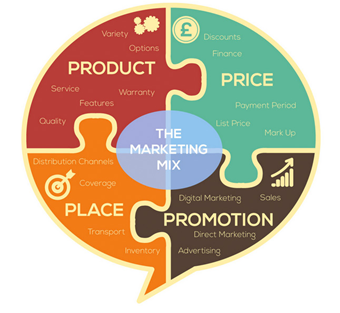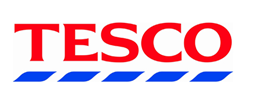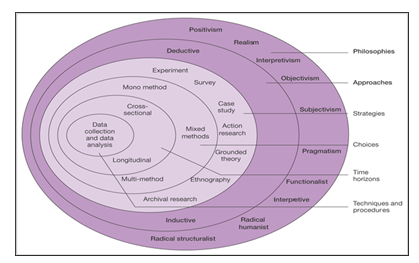- support@locusassignments.com
Unit 11 Research Project Assignment Sample

|
Programme |
Diploma in Business |
|
Unit Number and Title |
Unit 11 Research Project |
|
QFC Level |
Level 5 |
|
Unit Code |
R/508/0522 |
Research Proposal
Research Title: Marketing Research Plan for the Flavoured Water Market in the UK and Ireland
Research Project Description and Background
A drinks company, i.e. The Feel Good Drinks Company, and another company, i.e. Isklar the Norwegian Glacial Water, entered into a deal for five years where TESCO received the full distribution rights of the premium water brands in the UK and Ireland. The marketers feel that the company is not doing justice as its main focus is on fruit juices rather than selling and distributing the water brand. So, a marketing plan has to be prepared to ensure the success of the flavoured water brand (Atkins, et. al., 2014).
The research is purely mixed as it includes the collection of quantitative and qualitative information with the help of various primary and secondary data sources. The collected data will be analysed then to get real conclusions and to provide recommendations to the company for the success of the flavoured water brand (Babin, et. al., 2014).
If you are looking for professional UK assignment help services to help with your research or project work, Locus Assignments offers expert assignment helper services to guide you through your academic journey. Whether it’s a business research project or a detailed marketing plan, our team is ready to support you in achieving top results.

Research Aim and Objectives
1. Aim: The main aim of this research project is to identify the potential of the flavoured water market in the UK and Ireland and to ensure the methods which can be used for the success of the product.
2. Objectives: Objectives can be referred to as the combination of various goals which are needed to be achieved within the set time frame. The main research objectives of the research are:
• To identify the target market of flavoured water in the UK and Ireland.
• To recognise the success of flavoured water in the markets of the UK and Ireland.
•To analyse the response of the customers towards flavoured water in the UK.
Literature Review
Market research can be referred to as the activity which includes the collection of information about the customers’ needs and demands. It is the whole process which helps the organisation to define the opportunities and evaluate the actions which help the company identify the target market. It also helps in the decision making activities of the company for future business activities. Market research is of two types, primary research and secondary research, where the data is collected through different methods (, 2014).
Every new product is produced and launched by the companies to meet the demands of the people/customers, but not all of them succeed because most of them are not properly introduced in the market. Marketing research is one such tool which ensures the success of the product in the market by meeting the product features with the desires of the customers. Market research follows a process which includes knowing the customers and the competitors, targeting the customers, the product needs to be identified and its USP showcased, determining the marketing strategy, carrying on the marketing campaign and then monitoring the whole process and its success (Kotler & Keller, 2014).
The marketing guru Philip Kotler has given various theories on marketing. One of the best and most used theories is the marketing mix, which is also known as the theory of the 4 P’s of marketing. Kotler said that the marketing mix is a set of four variables which are used to impact and influence the response of the buyers in the market. These four variables are also used to develop the USP of the brand or a product (Kotler, 2013).
Market research is critical for launching a new product successfully, but it can be complex and time-consuming. If you need expert guidance on structuring your research or writing your literature review, Locus Assignments’ UK assignment services offer top-notch assignment helper support to streamline your work and enhance your academic success. Upload Assignment details and get started with your academic writing.
Research Methodology:
1. Introduction: This is the major section of the research in which all the methods and techniques which are used in the report are discussed. The onion research method is used in the research.
2. Research theory: This research follows the Research Onion Theory which has been given by Saunders et. al. (2007). This theory suggests that the research is conducted in sequence, step by step, just like the layers in the onion.
3. Research Philosophy: This refers to the ideology of the research. The research is developed on the basis of reality which shows it is more positivism-oriented.
4. Research Approach: This is the third level in which the approaches followed for the research are discussed. This research includes the following approaches:
• Quantitative approach: In this approach, quantitative data is collected, which is in numerical form, and statistical methods are used to analyse them.
• Qualitative approach: In this approach, qualitative data is collected in detail and descriptions.
5. Research strategies: The fourth stage of the research project suggests that there are plans and strategies which guide how the research will be carried out.
6. Choices: The next stage is Research Choice, which tells about the choices made for the research programme. In this research, a mixed approach will be used in which quantitative and qualitative data are collected.
7. Time Horizons: This shows the time durations which are taken for completing the research project and the set of activities taken up in the research that should be completed in the given time for effective results and success of the project.
8. Techniques and Procedures: The sampling technique for this research is a random sampling technique, and the sample size is 100 customers.
9. Collection of Data and Target Market: In this research, data will be collected through primary and secondary sources. Primary data is collected through survey questionnaires from the possible customers of the flavoured water, whereas secondary data in this research will be taken from websites, journals, articles, etc. For this research, customers of TESCO are the target market as they purchase products from TESCO and can be targeted for purchasing flavoured water (Beins, 2014).
In any research project, selecting the right methodology is crucial for obtaining valid results. If you’re unsure about your research approach or need assistance with data analysis, Locus Assignments provides you with expert assignment helpers, who ensure your methodology is robust and well-structured.
Research Timeline and Gantt Chart
|
Actions |
Time Period |
Description |
|
|
A. |
Groundwork on the research |
2 weeks |
At this stage, the groundwork will be prepared for the main research. |
|
B. |
Commencement of main research |
2 weeks |
This is the start of the research at which the feasibility is checked for the research activities. |
|
C. |
Data collection |
3 weeks |
Data for the research will be collected through both the primary and Secondary sources which help in better completion of the research. |
|
D. |
Data analysis |
3 weeks |
The data gathered will be analysed at this stage with the help of statistical calculations and will be presented nicely through charts and graphs. |
|
E. |
Conclusion and Recommendations |
2 weeks |
The conclusion is made on the basis of questionnaire survey results and the analysis of secondary data. On the basis of these recommendations are made. |
Literature Review
Market research can be referred to as the activity which includes a collection of information about the customer’s needs and demands. It is the whole process which helps the organisation to define the opportunities and evaluate the actions which help the company to identify the target market (Verschuren, et. al., 2010). It also helps in the decision-making activities of the company for future business activities. Market research is of two types, primary research and secondary research where the data is collected through different methods. This section contains the details about various concepts about market research of a new launch of a product in UK market by TESCO and theories. The research is about the launch of flavoured water which is distributed by TESCO in the UK and Ireland and it has to be determined what is the response of customers who visit TESCO towards Flavoured water (Kotler & Keller, 2014).
Every new product is produced and launched by the companies to meet the demands of the people/customers but not all of them succeed because most of them are not properly introduced in the market. Marketing research is one such tool which ensures the success of the product in the market by meeting the product features with the desires of the customers (Bryman & Bell, 2015). Market research follows a process which includes knowing the customers and the competitors, targeting the customers, the product to identify and showcase its USP, determining the marketing strategy, carrying on the marketing campaign and then monitoring the whole process and its success. Marketing Research can be defined as the systematic process of collection and analysis of data for marketing the goods and services in the target market. It improves the decisions of the business and the success of the product (, 2014).
The marketing Guru Philip Kotler has given various theories on Marketing, one of the best and most used theories is marketing mix which is also known as the theory of the 4 P’s of marketing. Kotler said that marketing mix is a set of four variables which are used to impact and influence the response of the buyers in the market. These four variables are also used to develop the USP of the brand or a product (Kotler, 2013).

These variables work in relation to each other. The analysis of the 4 P’s for flavoured water in the UK and Ireland is done below:
1. Product: The product is flavoured water which encourages the habit of drinking water of people in the country. Flavoured water is a healthy alternative to drinks which contain sugar like soft drinks and juices. The products are differentiated from the competitors with the help of packaging or benefits which has been offered by the product in comparison to other alternatives or brands (, 2014).
2. Pricing: To make people attractive towards flavoured water, TESCO should sell it at lower prices so as to penetrate the market. The prices of the product are decided after doing research on the acceptability of the product and the prices determined by the competitors. The cost of the development of the product is also considered on which the profit margins are added. Logical pricing is adopted so that the volume of sales can be maintained and revenues can be earned at a good amount (Kotler & Keller, 2014).

3. Promotion: Flavoured water has to be promoted by adopting the best strategies so that people become aware of the product and its benefits and its sales can be increased. The flavoured water will be promoted in the target market which is people who are health-conscious (Cassell, 2015). The product has to be established as a different product from its competitors and can be promoted by the company through advertisements on television so that people can have an image of the product in their minds. It can hire a celebrity as a brand ambassador which can attract many customers towards the product. The celebrities can be sportspersons who are health conscious. Products endorsed by them will create a good image in the minds of people. In TESCO, free Locus Assignments can also be given to make people aware of the product and its benefits (Keegan & Green, 2013).
4. Place: Place means the distribution channel through which the product is being provided to the customers from the manufacturers. Flavoured water is being distributed By TESCO in the UK and Ireland. So, the major distribution channel is the retail supermarkets of TESCO. Feel Good Drinks can also sell these products through a direct sales force of the company which will increase its sales volume (Armstrong & Kotler, 2013).

Research Tools and Techniques: Research Methodology
1. Introduction: This is the major section of the research in which all the methods and techniques which are used in the report are discussed. This section contains details about the methods of the data collection, analysis methods, timescales, limitations of the study, etc. The onion research method is used in the research which shows the different stages in which the research is being conducted.
2. Research theory: This research follows the Research Onion Theory which has been given by Saunders et al. (2007). This theory suggests that the research is conducted in sequence, step by step just like the layers in the onion. This shows that when every layer is removed more details are accessed so the stages in the report are like the layers in the onion (Saunders et al., 2012).

Research Onion Theory
1. Research Philosophy: This refers to the ideology of the research. The research is developed on the basis of reality which shows it is more over positivism. The rules and regulations have to be followed so as to avoid any legal actions.
2. Research question:
• What are the chances of success of flavoured water in the markets of the UK and Ireland?
• What is the response of the customers towards flavoured water in the UK?
3, Research Approach: This is the third level in which the approaches followed for the research are discussed. This research includes the following approaches:
• Quantitative approach: In this approach, quantitative data is collected which is in numerical form and statistical methods are used to analyse them. Quantitative data is collected through a survey questionnaire in which 12 questionnaires are included to test the response of the customers towards flavoured water (Sekaran & Bougie, 2013).
• Qualitative approach: In this approach, qualitative data is collected in detail and descriptions. The qualitative data is collected through various academic sources, journals, websites, etc.
4. Research strategies: The fourth stage of the research project suggests that there are plans and strategies which guide how the research will be carried out. This research has a research strategy of setting the objectives and then meeting them by collecting the data and analysing it for conclusions and recommendations.
5. Choices: The next stage is Research choice which tells about the choices made for the research programme in this research, a mixed approach will be used in which quantitative and qualitative data are collected for collecting the data in this type of approach, both quantitative and qualitative methods are used.
6. Time Horizons: This shows the time durations which are taken for completing the research project and the set of activities taken up in the research that should be completed in the given time for effective results and success of the project. If the research activities are not completed on time, it will hamper the growth of the project. The time horizon is a minimum of 3 months for the project.
7. Techniques and Procedures: The sampling technique is the technique through which a specific segment is chosen from the mass population to conduct research easily. The sampling technique for this research is a random sampling technique and the sample size is 100 customers.
8. Collection of data and Target market: In this research, data will be collected through primary and secondary sources.
• Primary sources are the ones which are contacted for the first time and provide raw data. Primary data is collected through survey questionnaires from the probable customers of the flavoured water (O'Leary, 2014).
• Secondary sources are those which are already used by someone and the data supports the primary data. Secondary data in this research will be taken from websites, journals, articles, etc. (Cooper & Schindler, 2014).
9. Ethical consideration: The research is done by following the ethics. The words included in the surveys are not aimed at harming the sentiments of people. The permissions are taken from the related authorities to make the research ethical.
10. Limitations of the study: The limitation of my research is that the customers may not provide genuine responses in the survey which might influence the conclusion of my research.
11. Reliability and validity of research: The data used is reliable and valid as it is referenced properly. Also, the responses collected and the other data are protected by strong passwords so that no unauthorised person can access or damage the data.
This is the layer in the onion theory which focuses on the collection of data and the target market. For this research, customers of TESCO are the target market as they purchase products from TESCO and can be targeted for purchasing flavoured water.
Choosing the correct tools for data collection can significantly impact the quality of your results. For expert guidance on creating survey questionnaires, sampling strategies, or other research techniques, turn to Locus Assignments for UK assignment help services that will make your research process seamless.
Conclusion and Recommendations
From the above research conducted on flavoured water and its response in the market, it is concluded that flavoured water is a very innovative step that the companies have taken to attract people and to provide them with new tastes in the drinks which already exist. It has been observed from the data collected that flavoured water is an effective presentation to the world among drinks, but it has not captured the hearts of people completely as it does not only contain beneficial aspects. According to the research conducted, the conclusion can be drawn that the organisation has taken the good initiative of flavoured water as well as it is healthy for the kids as well as adults. The flavoured drinking water contains different flavours which the person can taste at a lower cost. The flavoured water has the facility to provide the flavours of fresh fruits and the other likely eatables which the people find in the juices. But it is not as effective as the fruits because fruits contain the real juices of the fruits. The flavoured water contains the maximum flavours. The flavoured water is a healthy product as compared to soft drinks and cold drinks which are poisonous to the health of the people. The flavoured water can work as an alternative to hazardous cold drinks. According to the above data collected, it has been observed that people like the flavoured water, but it is not as compared to the normal water and the juices. By this project, we were able to meet the objectives and the aims of conducting the research which is to observe whether the flavoured drinking is effective in the market or not.
Recommendations to the companies can be that they should improve the flavours of the water by increasing the quality flavours and the instincts of the flavours in the water so as the people can consume the water with more interest and the flavours should be innovated in a manner to provide the unique taste as compared to the juices and the other soft drinks and the prices of the flavoured water should also be decreased in order to attract the people to purchase it. The flavoured water should be promoted very effectively and the companies should also use effective strategies for the advertisement and promotion and the marketing of the flavoured water to attract them. The companies should also provide offers and promotional schemes for flavoured water to increase its sales and consumption. To gain the maximum popularity for flavoured water, it is needed that the companies should provide the maximum effective features to the flavoured water to increase its sales and marketing.
Received another assignment to write? Let Locus Assignments handle it for you. Our team of expert assignment helpers are highly skilled and has years of experience in academic writing. Upload Assignment details now to get started with your assignments and submit them early to score high grades.
References
Armstrong, G., & Kotler, P. (2013). Marketing: An introduction (11th, Global ed.). Boston;London;: .
Atkins, S., Gill, L., & McConnell, C. (2014). Teaching dimension reduction to business students via mixed methods research. European Conference on Research Methodology for Business and Management Studies, , 29.
Babin, B. J., D'Alessandro, S., Lowe, B., & Winzar, H. (2014). Marketing research (Asia-Pacific 3. ed.). South Melbourne, Victoria: Cengage Learning.
Beins, B. (2014). Successful research projects: A step-by-step guide. Thousand Oaks, California: SAGE Publications, Inc.
Bryman, A., & Bell, E., 1968. (2015). Business research methods (Fourth ed.). New York, NY, United States ofAmerica;Cambridge, United Kingdom;: Oxford University Press.
Cassell, C. (2015). Conducting research interviews for business and management students. Thousand Oaks,California;London;: SAGE.
Cooper, D. R., & Schindler, P. S. (2014). Business research methods (Twelfth ed.). New York, NY: McGraw-Hill/Irwin.
Keegan, W. J., & Green, M. C. (2013). Global marketing (7th, global ed.). Boston,Mass;London;: .
Kotler, P. (2013). Principles of Marketing. Education Limited.
Kotler, P., & Keller, K. (2014). Marketing and Management,. , USA: Prentice Hall.
O'Leary, Z. (2014). The essential guide to doing your research project (2nd ed.). London: SAGE.
, D., & Books24x7, I. (2014;2013;). The 20 ps of marketing: A complete guide to marketing strategy. GB: Kogan Page Ltd.
Saunders, M., 1959, Lewis, P., 1945, & Thornhill, A. (2012). Research methods for business students (6th ed.). Harlow: Education.
Sekaran, U., & Bougie, R. (2013). Research methods for business: A skill-building approach(Sixth ed.). Chichester, West Sussex: Wiley.
Verschuren, P., Doorewaard, H. (., & Mellion, M. J. (2010). Designing a research project (2nd ed.). The Hague: Eleven International Publishing House.
Walker, R., Solvason, C., Bowen, J., Scott, W., McNiff, J., &ebrary, I. (2014). Success with your early years research project. London, [England]: SAGE.
For complete copy of this solution, order now from Assignment Help
Need Help with Your Assignment?
Get expert guidance from top professionals & submit your work with confidence.
Fast • Reliable • Expert Support
Upload NowDetails
Other Assignments
Related Solution
Other Solution


